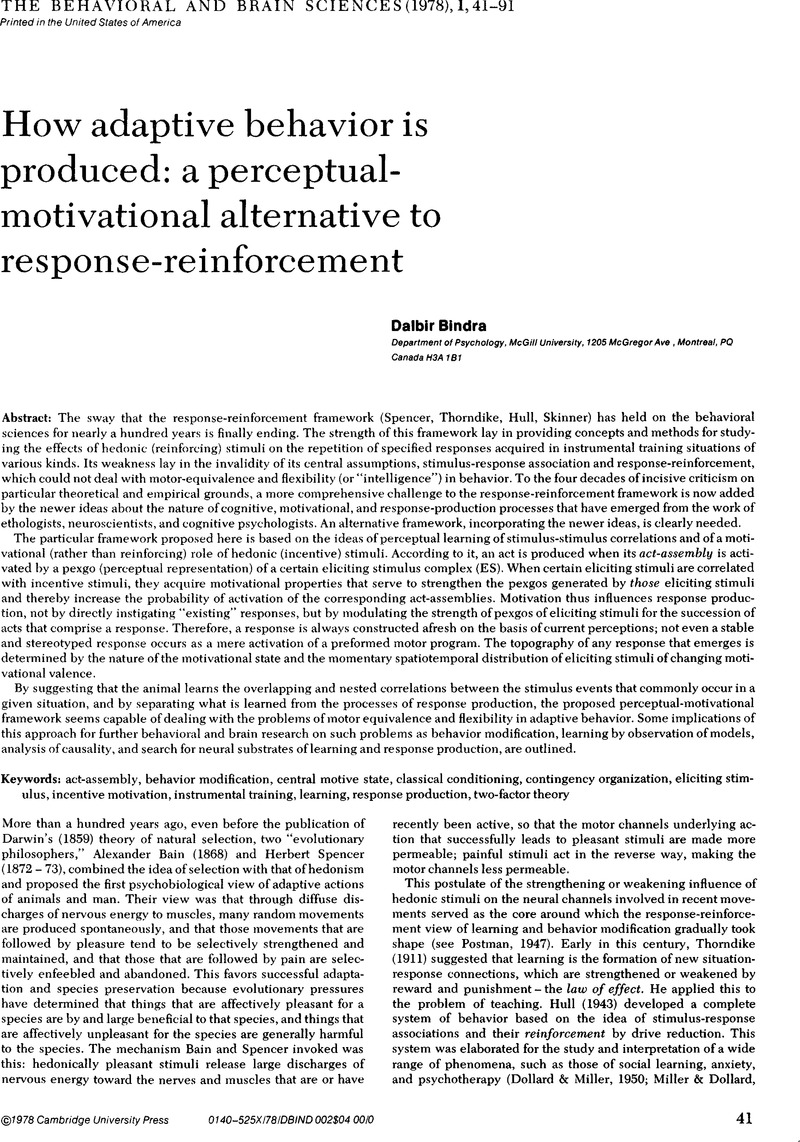No CrossRef data available.
Article contents
Bindra's S-S contiguity theory of instrumental, learning
Published online by Cambridge University Press: 04 February 2010
Abstract
An abstract is not available for this content so a preview has been provided. Please use the Get access link above for information on how to access this content.

Information
- Type
- Open Peer Commentary
- Information
- Copyright
- Copyright © Cambridge University Press 1978
References
REFERENCES
Birch, H. G., and Bitterman, M. E.Reinforcement and learning: The process of sensory integration. Psychological Review. 56:292–308, 1949.Google Scholar
Ellison, D. G., and Konorski, J.Separation of salivary and motor responses in instrumental conditioning. Science. 146:1071–2.1964.CrossRefGoogle ScholarPubMed
Lashley, K. S.Studies of cerebral functions in learning. IV. The theory that synaptic resistance is reduced by the passage of the nerve impulse. Psychological Review. 31:360–75.1924.Google Scholar
Spence, K. W.Behavior Theory and Conditioning. New Haven, Conn., Yale University Press, 1956.CrossRefGoogle Scholar

